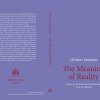The Hilandar Research Library has the largest collection of medieval Slavic manuscripts on microform in the world.
The Hilandar Research Library’s (HRL) millions of folia of manuscript material on microform from more than 100 different private, museum, and library collections in dozens of countries are utilized by scholars from all over the world. The collection includes several thousand Cyrillic manuscripts on microform, with over 1200 from several monasteries on Mount Athos, Greece, including the entire Slavic manuscript collection of Hilandar Monastery. The Hilandar Research Library also contains a large specialized reference collection, in print and in microform, as well as a growing collection of original manuscripts and artifacts from the medieval Slavic world. Located at The Ohio State University, the HRL shares its space with the Resource Center for Medieval Slavic Studies.
The Resource Center for Medieval Slavic Studies fosters and supports research and collaboration in medieval Slavic languages, linguistics, history, and culture.
Founded in 1984, the Resource Center for Medieval Slavic Studies (RCMSS) is an independent center of The Ohio State University College of Humanities and is dedicated to the promotion of medieval Slavic Studies. The RCMSS maintains particularly close ties, as well as sharing space with, the Hilandar Research Library. Both entities developed as an outgrowth of the original Hilandar Research Project, which ran from 1969 to 1982. The RCMSS is the only such non-national based or oriented center in the United States, although it does tend to promote Cyrillic-based research. The Center strives to accomplish its goals through the support of the preservation and access activities of the HRL, the promotion of research, the provisions of stipends and travel research funds, the funding of materials acquisition and preservation, publication support, and through the sponsorship of lectures, workshops, and conferences.
To date, the RCMSS has sponsored or co-sponsored a series of international “Hilandar” conferences, as well as national conferences, panels, and individual presentations. RCMSS has fostered international scholarship and collaboration by bringing scholars together to work on previously-inaccessible medieval Slavic resources.
Click here to go to the web-site of the Hilandar Research Library and Resource Center for Medieval Slavic Studies
Click here to go to the Collections & Access page
Additional Link: The Steven Enich Serbian Orthodox Culture Slide Collection at The Ohio State University Knowledge Bank
.



